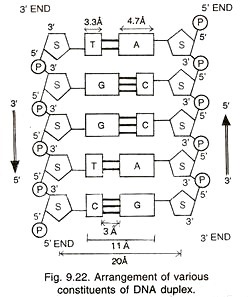ADVERTISEMENTS:
In drinking water disinfection by chlorine it has been demonstrated that the growth of heterotroph plate count of bacteria followed first order kinetics in the water phase of pipe system containing bacterial nutrients.
This is valid for a limited stretch of pipe, where the concentration, on the other hand, has been demonstrated to follow a modified Chick’s law, in which the concentration of the germicidal agent is incorporated in the first order.
This is valid during the disinfection process, and does not take initial and final effects into consideration. In a study, the effects of growth assumed first order kinetics with respect to the bacterial number, while inactivation assumed first order kinetics with respect to both bacterial number and concentration of the disinfectant.
ADVERTISEMENTS:
These may be combined in one expression:
dN/dt = µ N – λ NC (12.14)
where N is the bacterial density in the water l-1; t is time, h; µ is the growth rate constant of the bacterial units in the water h-1, λ is the inactivation rate constant, lg-1 h-1; C is the concentration of disinfectant in the water, gl-1.
Disinfectant Decay Kinetics:
ADVERTISEMENTS:
Contrary to most inactivation studies where the concentration of disinfectant, C, is assumed to be constant during a relatively short period of time, one study included the decay of disinfectants, which inevitably took place in the water supply systems. The decay was assumed to be first order with respect to the concentration of the disinfectant C, and first order with respect to the sum concentration of disinfectant consuming substances S.
-dC/dt = kSC (12.15)
Here k is the first order rate constant for decay of the disinfectant, lg-1 h-1; S is the sum concentration of the disinfectant consuming substances expressed in g disinfectant-equivalent/ liter.
In order to predict the changes in the concentration of the disinfectant C, implicit information is required about the initial concentration of the disinfectant consuming substances, S. In the chlorination process, S represents the sum of all chlorine consuming compounds in the water, measured in terms of consumed chlorine per unit volume, that is, a parameter comparable to the chlorine demand. The advantage of this transformation lies in the assumption that the change in the concentration of the compounds may be expressed as a change in the concentration of the disinfectant, thus one may express.
It must be noted that equation (12.19) and (12.21) are not applicable under conditions where C0 is equal to S0 that is, where the initial chlorine concentration is equal to the demand. In such cases the differential equation (12.18) is reduced and resolved as follows:
Contrary to most established kinetic models of growth with inactivation, equations 12.12 and 12.25 are able to simulate the menacing water supply phenomena, of upstream disinfection, decay of chlorine, and downstream re-growth, once the concentration of chlorine is below a certain level.
ADVERTISEMENTS:
Control of Microbe by Antimicrobial Drug/Agent:
More recently an avenue to control bacteria through drug – bacteria interaction (DBI) has been presented as scope to process biotechnology.


